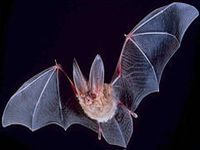Ebola update: Virus now affects 4 countries
143 clinically compatible cases of Ebola virus disease (EVD) have been confirmed in the Republic of Guinea, causing 86 deaths, a case fatality rate of 60 per cent. New cases have been reported in recent days in Conakry, Guekedou and Macenta, the latest on April 3. 23 people remain in isolation units.

14 healthcare workers have been infected with EVD, of whom 8 have died. Of the 86 deaths, 16 are laboratory confirmed cases, 65 are classified as probable and 5 as suspected. The cases and deaths in the Republic of Guinea are distributed as follows:
Conakry (18 cases, including 5 deaths), Guekedou (85 cases/59 deaths), Macenta (27 cases/14 deaths), Kissidougou (9 cases/5 deaths), and Dabola and Djingaraye combined (4 cases/3 deaths).
Outside the Republic of Guinea, the Liberian Health Ministry has reported 2 confirmed and 18 suspected cases of EVD, including 7 deaths with 4 new cases reported on April 4. In Mali, the Ministry of Health has reported 4 suspected cases while in Sierra Leone there have been 2 deaths in citizens who travelled to and died in the Republic of Guinea.
The Ebola outbreak in the Republic of Guinea has broken out of the forested areas in the South-East of the country, where it began possibly because of the consumption of dried bats (bushmeat), which are thought to harbor the virus.
National Emergency Committees have been set up in the Republic of Guinea, Liberia and Sierra Leone together with Rapid Response Teams. Case isolation units have been placed in strategic areas and training has been provided to healthcare professionals.
The Ebola fever virus is named after the river Ebola in the Republic of Zaire (now DR Congo) where it was discovered in 1976. It is transmitted by contact with the skin, body fluids or meat of infected persons or animals. A common source of infection in some parts of Africa is when people place their hands on the deceased person at funerals.
The incubation period is between two to twenty-one days, after which the temperature rises sharply. The patient feels an intense tiredness, muscular pains, headaches, sore throat and then vomiting, diarrhea, a rash on the skin, dehydration, kidney and liver failure and massive internal and external hemorrhage. Patients suddenly start bleeding from the nose, ears, anus, mouth, penis or vagina, eyes or even skin.
Around 1,200 people have lost their lives from the Ebola virus since it was discovered in 1976. There have been serious outbreaks in the DR Congo/Zaire in 1976 (218 cases), 1995 (315) and 2007 (264); Sudan in 1976 (284), and Uganda in 2000 (425).
There is as yet no vaccine or treatment for this disease. In Europe, the Portuguese health authorities have alerted the medicinal services for possible entrance into the country from Guinea Bissau.
Timofei Belov
Pravda.Ru
Subscribe to Pravda.Ru Telegram channel, Facebook, RSS!


